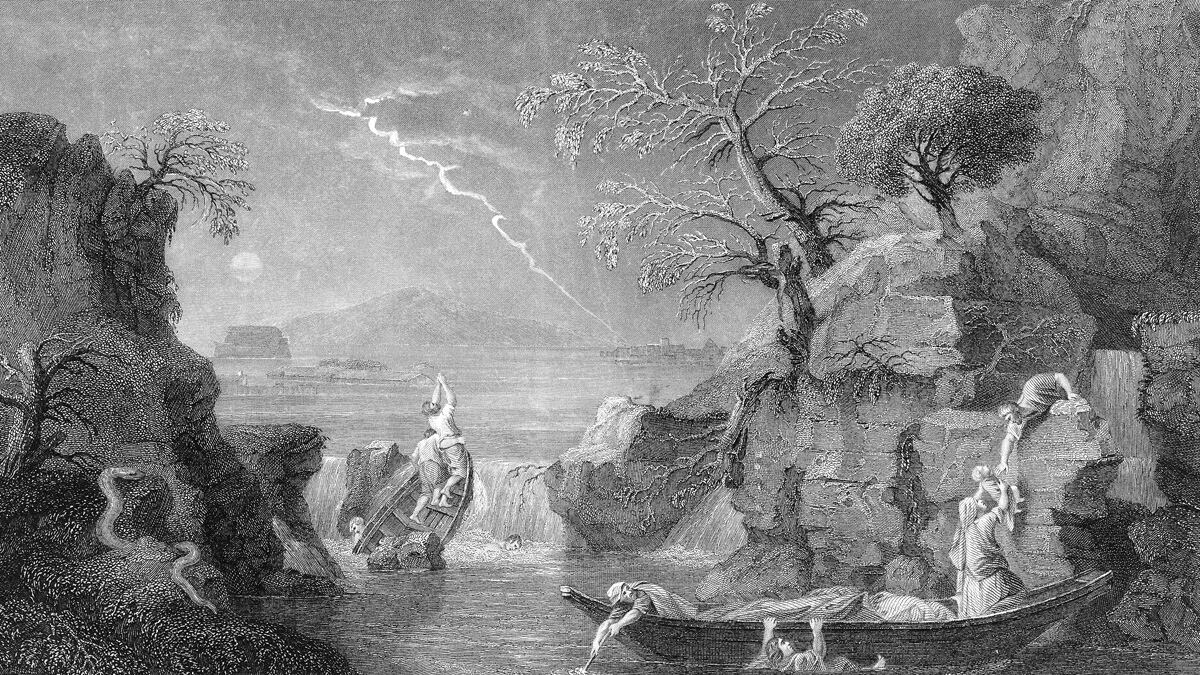The geologist David R. Montgomery set out to write a “straightforward refutation of creationism.” Rocks, after all, don’t lie. Radioactive dating does show that the Earth is billions and not thousands of years old, refuting young-Earth creationism.

On one level, he did just that. The Rocks Don’t Lie: A Geologist Investigates Noah’s Flood is a meticulous, devastating critique of the pseudoscientific origin stories proposed—and imposed—by American fundamentalist Christians. Montgomery, a professor of Earth and Space Sciences at the University of Washington in Seattle, makes no compromises in the defense of his discipline and scientific knowledge in general. In a valley in Tibet, it was his knowledge of geology, not the local folklore, that helped him piece together how a giant iceberg had dammed an ancient lake, occasionally releasing catastrophic floods.
But soon, Montgomery’s review of ancient flood lore and pregeology diluvian hypothesizing began to tell a different story, one that might defuse the science-vs.-religion debate by recasting it as more of a conversation than an all-out war. The Rocks Don’t Lie is fascinated by the way early natural philosophers and proto-geologists were also deeply engaged in the interpretation of scripture. Their field work and their Bible reading provoked one another, fueling discovery in both realms. “All too often,” Montgomery writes, “the history of science is simplified into a story of the light of reason dispelling the shadows of myth and superstition.”
The Danish scientist Niels Stensen, also known as Nicolas Steno, made groundbreaking discoveries about fossils in the 1600s that led to the foundations of modern stratigraphy (the study of rock layers) and geology. Yet he was also a Catholic bishop who died in poverty after giving his money to the poor and devoting himself to an ascetic life. Jesuit scholar Athanasius Kircher conducted prodigious observations of caves, canyons, and volcanic craters, and posited an early version of the hydrological cycle. Other theologians like Thomas Burnet, who theorized that God had timed an internal sea to explode out of the Earth just as human wickedness reached its zenith, were hilariously wrong and made no lasting contribution to science. Yet, with his empathy for scholars fascinated by the natural world, Montgomery treats such figures as engaged in serious inquiry; they may have let their imaginations run away with them, but they were pushing open doors for modern science and for reimagined religious interpretation.
Of course, censors and heretic-hunters were always on the prowl for early students of the natural world whose discoveries were seen as a threat. Most famous was the Spanish Inquisition’s persecution of Galileo for his telescope, which led him to confirm Copernicus’s heretical theory that the Earth was not the center of the universe. “Scholars eager to defend the Bible agreed that Galileo’s findings were absurd,” Montgomery writes. “When he offered doubters a chance to look through his telescope, many either proclaimed it impious to look or denounced Jupiter’s tiny satellites as devilish illusions.” Galileo accompanied his findings with arguments about how to interpret scripture, but the church still insisted his research undermined the entire Christian faith. The irony is that the idea of an Earth-centric universe came, not from the Bible, but from the Greek mathematician, astronomer and geographer Ptolemy.
The censors have returned in the past half-century of American history, as 20th-century fundamentalist Christians developed the notion of “biblical inerrancy” and isolated themselves from dialogue with modern science. Montgomery’s account helpfully illustrates what an anomaly these positions are in Christian tradition. Religious thinkers argued against anti-intellectualism as far back as Augustine, who declared that anything humans understood with their “rational faculties” from observing the natural world could be assumed not to contradict scripture. He makes the observation, applicable far beyond geology, that conservative evangelicals often shut themselves out of scientific discourses before breakthroughs were made, leaving them to repackage discredited theories as serious science to credulous believers.
The current creationist movement is so detached from reality that it no longer even bothers to address scientific arguments—for several decades now, it has simply dismissed them. Montgomery reserves some of his deepest incredulity for Ken Ham’s Creation Museum in Petersburg, Kentucky, though his tone is more shocked than condescending. “As advertised, this natural history museum delivers a unique and unparalleled experience,” he writes. “Even minimal geologic training equips one to see how the material displayed in some of these exhibits contradicts the imperative signage.”

Montgomery’s book is anything but a softening of religion’s deliberate persecution and denial of scientific inquiry, which remains very much with us. But he wants to complicate the picture. Religion has been both the antagonist and the ally of science. It has persecuted “heretics.” But it has also provided imaginative fictions that preserve historical events and provoked intense curiosity about the natural world. If Montgomery wants to correct religion’s anti-intellectualism, he also wants to unsettle science’s potential for calcifying into orthodoxies of its own. That can be done, he shows, by simply looking more closely at the lives and passions of explorers past.
It can also be done, Montgomery suggests, by looking at moments where pure reaction—in many cases to theories that sound suspiciously theological—have left scientists standing in the same position as those who insisted Jupiter’s moons in Galileo’s telescope were illusions. When J. Harlen Bretz discovered evidence of catastrophic floods in Washington in the 1920s, he was immediately dismissed by the scientific establishment. After a lifetime of tireless fieldwork, Bretz was able to prove conclusively that a previously undiscovered deep lake had sent floods to carve Washington’s Channeled Scablands. The find led to the discovery of other similar lakes and floods, but was initially disbelieved because it was “geological heresy.”
Geology is far from the only discipline to become newly aware of its theological heritage; the much-debated “return of religion” has shown up all across the academy, particularly in the social sciences. Montgomery is an excellent example of how a serious, even sympathetic, engagement with religion need not threaten reason or compromise scientific integrity; in fact, to avoid doing so would be to remain blind to so many of our foundational assumptions and prejudices.






